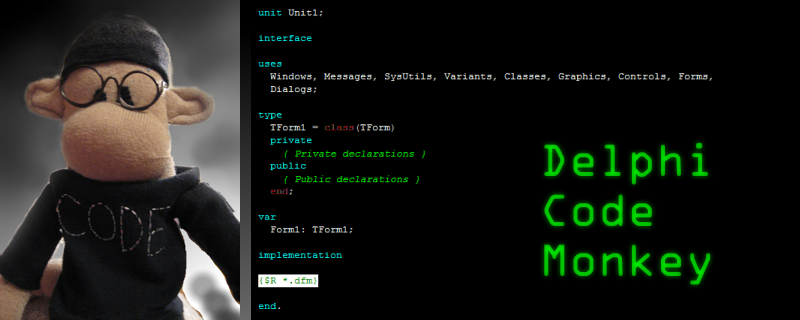Anybody who doubts the sincerity of my last post (the PC desktop is headed inexorably towards a legacy technology status) and who also is into Nostalgia, should check this out.
It's a mostly-complete TurboPascal compiler written in JavaScript that compiles to a UCSD-PCODE equivalent bytecode instead of native X86. The resulting code runs in a UCDS-PCODE vm also implemented in JavaScript.
Now that's what I call a killer Blog Post. Read the blog post and try this over here.
Oh yea, and he posted to code on GitHub. Anybody want to implement Pascal RAD IDE in their web browser? Should only take a few weekends here and there. I kid, I kid. A desktop IDE, and a real compiler do a lot more, and take a lot longer to build, than this Just For Kicks thing did. But if this person had realized that they could just download the real DOS TurboPascal from the Embarcadero/Borland Museum, and done that, then there wouldn't be a new JavaScript pascal parser out there. Which is inherently a cool thing.
It's a mostly-complete TurboPascal compiler written in JavaScript that compiles to a UCSD-PCODE equivalent bytecode instead of native X86. The resulting code runs in a UCDS-PCODE vm also implemented in JavaScript.
Now that's what I call a killer Blog Post. Read the blog post and try this over here.
Oh yea, and he posted to code on GitHub. Anybody want to implement Pascal RAD IDE in their web browser? Should only take a few weekends here and there. I kid, I kid. A desktop IDE, and a real compiler do a lot more, and take a lot longer to build, than this Just For Kicks thing did. But if this person had realized that they could just download the real DOS TurboPascal from the Embarcadero/Borland Museum, and done that, then there wouldn't be a new JavaScript pascal parser out there. Which is inherently a cool thing.


Now consider this: http://www.intel.com/content/www/us/en/do-it-yourself/galileo-maker-quark-board.html?wapkw=galileo
ReplyDeleteAn embedded Pentium-class board.
It's funny you consider surprising that now a multi GHz, multi core, Multi GB machine can do in JavaScript what was done thirty years ago in assembler on machines with one core of a few MHz, and in a few kB of RAM - less than the L1 cache of actual processors. Apply Moore Laws to thirty years... guess you can do even more now, you can code a whole DOS in JavaScript, and maybe even Win 3.1 if you have enough time. But it won't surprise me. If you could code today actual versions of Oracle, Photoshop, AutoCAD, MatLab, Windows 2012, VMware, or even a full version of Word or Excel in JavaScript I would be surprised.
ReplyDeleteYou can't see mobile devices are limited by their own mobility. Multiple CPUs with a lot of cores requires power, and generate heat. High-end GPUs - also used to speed up floating point calculations, the same. Sure, the average YouTube app can do without, but do you believe people really gets work done with those apps? Sure, you can see quarterly sales report on your iPad, but maybe it required a quad processor 16 cores CPU on a large server with terabytes of disks to generate it from a large datawarehouse. Need some input device more sophisticated than your finger - or a configurable machine with custom hardware for specific tasks? Oh, you'll need a "legacy" PC.
People like you just look at the finger on the touch screen, and can't really see the whole behind. Soon, when the mobile market will be saturated, and the hype dust settles, you'll find that desktop PC are not "legacy" at all. Just you'll use different tools for different tasks - need a quick look at email? Check the phone. Need to work a little on the train, or just entertain yourself on a train? A table is good. Need to design the next Boeing fighter or work on the next Pixar movie - or just learn how to do it? Guess you need to use some powerful desktop PC.... and no, you can't do that with a thirty years old UCSD Pascal rewritten in JavaScript...
This comment has been removed by the author.
ReplyDeleteWow KMorwath, are your funny sensors malfunctioning?
ReplyDeleteWarren